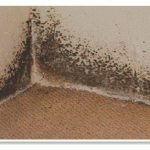While asbestos products were widely used in building construction since the early 1900’s, the recognition of health hazard evolved slowly. The occupational hazard of asbestos was identified in the 1930’s in Great Britain and was recognized in the medical literature in the United States by World War II. The occupational disease asbestosis was the first asbestos disease recognized in the medical literature and was cited in the Worker’s Compensation laws in many states in the US. It took much longer to recognize the cancer mesothelioma, since it tends to have a long latency period. As stated in the National Cancer Institute paper, “Also, very high exposures, which were likely to have occurred in the 1930’s and 1940’s, may have resulted in lung cancer or asbestosis before mesothelioma could develop.”
The State of New Jersey established several standards in the 1950’s and 1960’s. The 1958 Title 34:6-48 states “The owner, agent, or lessee of any factory, workshop, mill or place where the manufacture of goods is carried on shall provide in each workroom proper and sufficient ventilation…to render harmless any excessive heat, steam, gases, vapors, dust, etc.” This quote encapsulates the occupational health wisdom at the time: the risk of exposure was understood to occur in industrial workplaces that manufacture goods. There was very little recognition that exposure could occur in construction work places, and virtually none that exposure could occur in commercial or residential buildings.
The second significant characteristic of the early standards was the expectation that the employer carried the responsibility for the health and safety of his employees. This is reflected in the worker’s compensation rules and various exposure limits. The employer was responsible for his employees, and continued to carry the burden of protecting workers when the first OSHA standards were adopted in 1971. There was absolutely no expectation that a building owner who did not manufacture asbestos products and employed no workers involved in asbestos handling had any responsibility to understand or manage asbestos exposure risks.
I note that the effective date of the first OSHA permissible exposure standard for asbestos, 29 CFR 1910.1001, was July 7, 1972. The standard applied to general industry employers involved in the manufacturing or handling asbestos products. Construction activities were not conclusively included in the OSHA asbestos standards until the mid-1980’s.
The first EPA asbestos standard, 40 CFR Part 61 National Emission Standards for Hazardous Air Pollutants (NESHAPS), published in April 1973, was similarly limited. This standard applied to the demolition of buildings with asbestos materials, and to the fabrication (manufacture) and spray application of asbestos materials. It did not apply to the non-spray installation of asbestos materials. This standard, which eventually evolved to include a much broader group of asbestos activities, had a narrow scope in 1973. It had very little impact on the recognition of asbestos risk in the general construction field.
The EPA standard had absolutely no impact on building owners, unless they were planning to demolish all or part of their building. As a result, the hazard posed by asbestos materials in buildings was not generally on the public radar screen until the early 1980’s.
